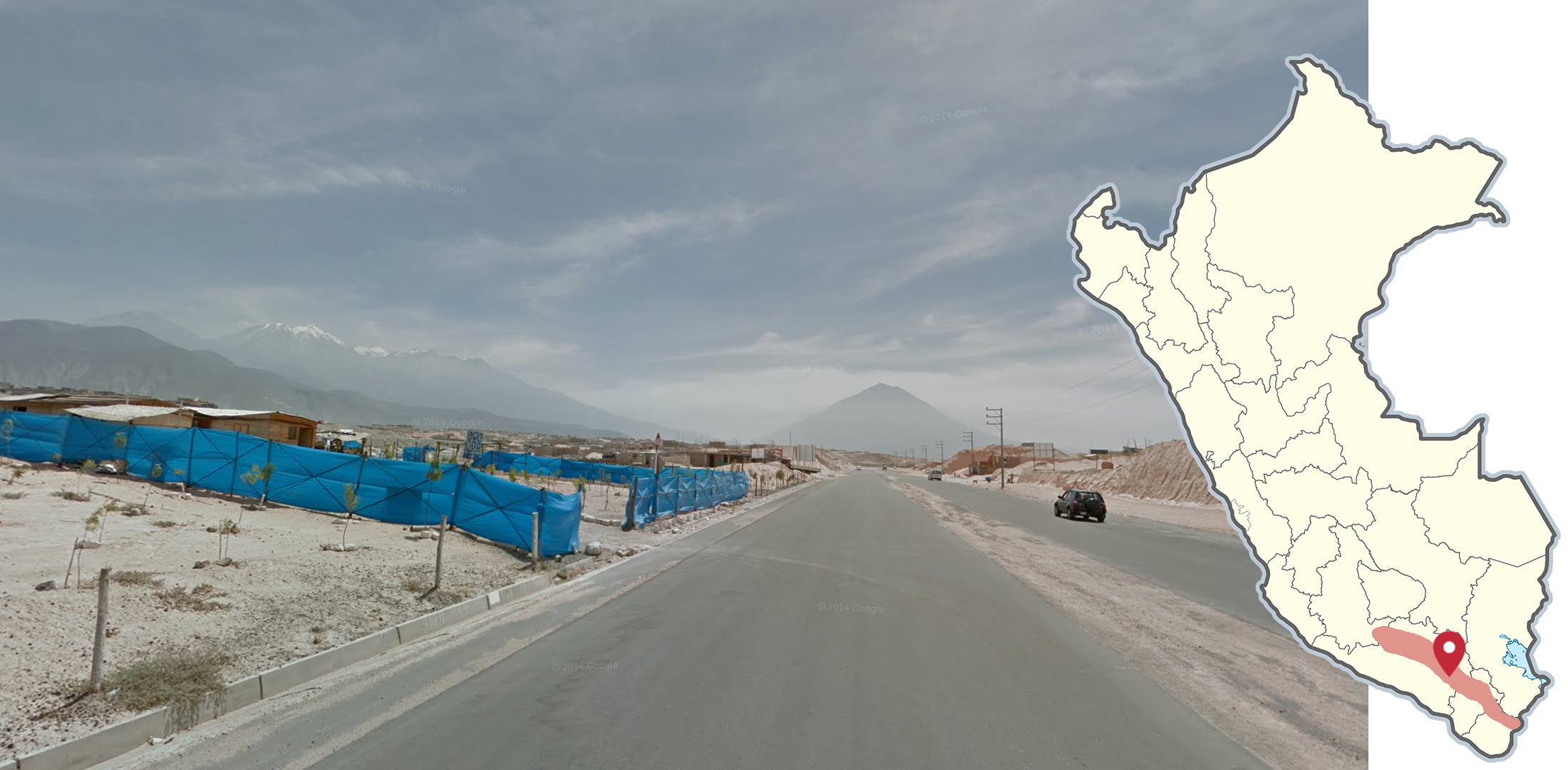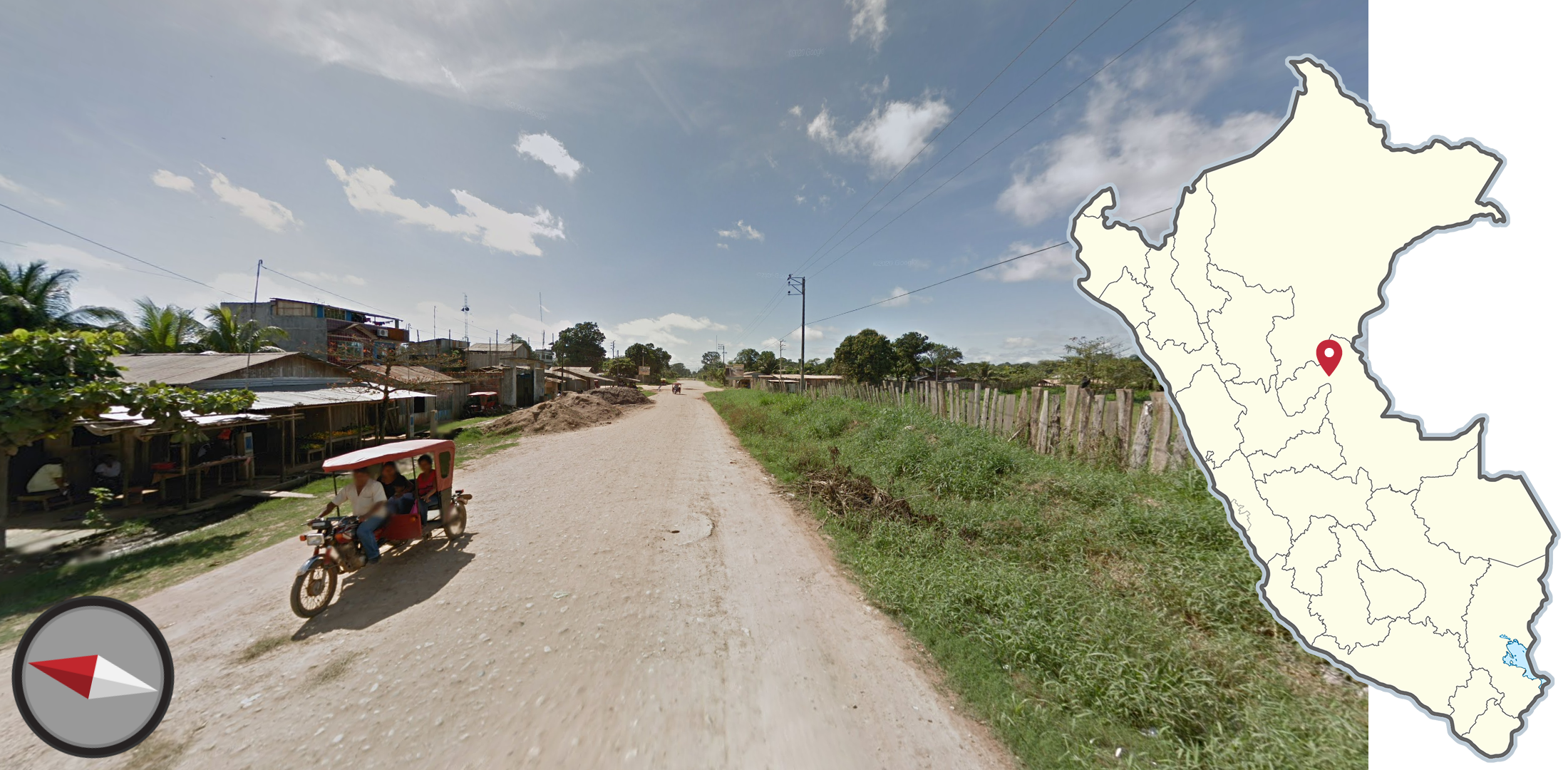
Peru
Peruvian licence plates are either white or yellow. In contrast to the white plates, yellow plates are less likely to be seen.
Additionally, taxis in Peru typically use licence plates that are yellow on the top and white on the bottom.
NOTE: Within South America, yellow licence plates are only found in Peru, Colombia and rarely, Chile.
An important thing to note is that Peru has Generation 4 Street View coverage, whereas the neighbouring country of Bolivia does not. While Ecuador does have some Generation 4 coverage, it will always have a large pickup truck.
Peruvian roads always have white outer lines. On highways, you will find either single yellow dashed or double yellow middle lines. On rural mountain roads, you will most likely see white outer lines without any centre line. On divided highways, the road lines may be completely white in colour.
NOTE: In the continent of South America, rural mountain roads, with the features mentioned above, are predominantly found in Peru.
Peru often has black-and-white striped signposts. In some areas, black-and-yellow signposts can be seen.
NOTE: It is the only country in South America that uses them.
Bollards in Peru are painted red or yellow, and the country mainly uses a variety of triangular-shaped concrete bollards. Occasionally you will also spot other designs, such as these circular concrete variants.
Black-and-yellow stripes on guardrails are seen throughout the country. You might sometimes find different designs, such as this sharp arrow design.
NOTE: Similar striped guardrails are also found in Bolivia. To differentiate them, just have a look at the outer stripe. Peru uses a black one, while Bolivia features a yellow one.
Kilometre markers in Peru are made out of concrete and are painted black and white.
NOTE: When entering and leaving urban areas, the markers will sometimes feature the road number.
Some poles in Peru have painted bottom sections. Most commonly they will be black or black-and-yellow.
NOTE: This pattern of pole paint is unique to Peru within South America, however, similar ones can be seen in other South American countries, such as Colombia.
Wide red and white stickers will typically be attached to the side of taxis and commercial vehicles.
NOTE: While less common, these can be found in some neighbouring countries.
Peru has many political party logos and all of them are unique to the country. Here is a list with other parties in Peru.
Peru is home to diverse and somewhat unique architecture. Here are a few examples of types of buildings commonly seen in Peru; ranging from Colonial-era buildings, contemporary “boxy” buildings, and traditional red brick buildings.
Some of these styles are broken down further in Step 2 of this guide.
Peru has a diverse climate, dominated by a dry desert in the west, and a tropical rainforest in the east.
You can click on the image to enlarge it.
Far north Peru features mountains that are often covered in shrubby trees and bushes. Closer to the coast and the Ecuador border, these mountains are often quite dry in appearance.
Pine plantations are typically found in higher elevation areas of the country, away from the coastal deserts and Amazonian Regions. The most common types of pine trees planted are Pinus radiata and Pinus patula.
In higher elevation areas near the centre of the country, exposed rocky outcroppings are commonly seen in the sides of hills and mountains. Some areas with the highest concentrations are near Lago Chinchaycocha (Junin District) stretching south towards the city of Ayacucho.
NOTE: Exposed rocks can rarely be seen anywhere in the country, so use this meta with some caution.
Patches of light green lichen can be seen covering rocks and growing on the ground in high elevation areas of central and southern Peru.
Areas near the cities of Ica, Arequipa, and Tacna feature barren and mostly flat desert landscapes that can resemble areas of northern Chile. You can typically see mountains in the distance, primarily while looking to the east.
Coastal agricultural valleys in the middle and south are commonly sandwiched between dry mountains with no vegetation. The general orientation of these valleys are southwest-northeast.
NOTE: Agricultural valleys in the north of Peru can look similar, but often feature more shrubs and trees on the mountains.
As a general rule, the closer you are to Lake Titicaca in Peru, houses and buildings made out of red brick become more common. This type of architecture resembles the predominant type of building seen in parts of western Bolivia, which is helpful for remembering where it is seen most commonly. Additionally, buildings with blue tinted glass can be seen most commonly in the same areas.
NOTE: Red brick buildings can be seen anywhere in the country, so use other clues before guessing.
Ruta 30C in eastern Peru uses a white Street View car in Generation 3 between the cities of Planchon and Iñapari. It features dense forest, few villages, and resembles interior areas of Brazil. Some of this area has been overwritten with Generation 4. Most of this segment runs north to south.
North of the city of Huancayo lies a shallow lake called Lake Chinchaycocha (also referred to as ‘the middle lake.’). This lake is generally marshy and a range of mountains can be seen to the east of the lake. This lake can look similar to Lake Titicaca, but is generally less densely populated and features fewer trees.
Iquitos is a city in northeast Peru. It is an isolated city with only Generation 3 Street View coverage. Three-wheeled tuk-tuks, overcast skies, and rolling Amazonian landscapes are commonly seen in the area. This coverage is isolated from other areas of northern Peru.
The southern city of Cusco is recognizable by its prevalence of both red brick and Spanish colonial style buildings. Cusco is surrounded by mountains on all sides and features an airport in the middle of the city. Due to its proximity and similar architecture, Cusco superficially resembles the Bolivian city of La Paz.
GeoGuessr’s own official maps are not very good, for a variety of reasons. Plonk It recommends the following maps instead:
A Balanced Peru (map link) - 100k+ AI Generated locations in Peru. This map may not be pinpointable.
AI Gen - Peru (map link) - 50k+ AI Generated locations in Peru. This map may not be pinpointable.
In addition, here are some resources to help you practise Peru:
Plonk It Peru (map link) - This map contains locations for practising each meta in the Plonk It Peru guide from step 2 to 3.






























































